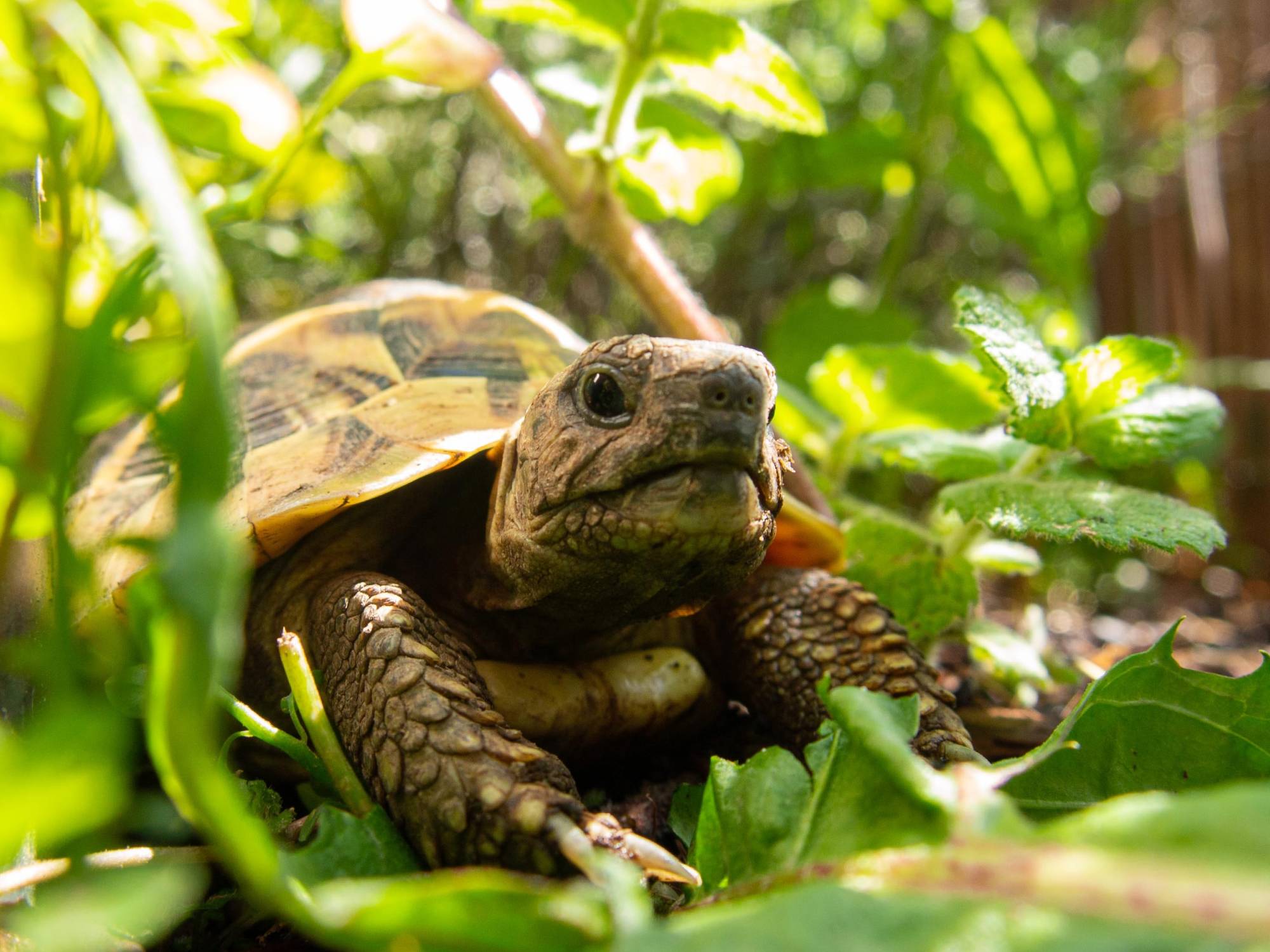

Tortoises often appear in legends and fairy tales—but they can also appear in your own backyard. North America is home to four species of wild tortoise, all sharing similar characteristics: domed shells, clawed feet, and a lovably slow gait.
While you may be accustomed to seeing turtles in your local ponds and parks, wild tortoise sightings are usually rarer. But depending on where you live, you still may be able to catch a glimpse of these majestic reptiles. With a little effort and a lot of patience, you can make your property a prime spot for tortoise visitors.
Know your area
There are only four varieties of tortoise native to North America, and you can only find them in certain regions of the US. Here’s where to look:
Berlandier’s tortoise
Also called the Texas Tortoise, this beauty is mostly found in the southernmost point of Texas.
Desert tortoises
These iconic tortoises are found in the southwest, particularly in central and western Arizona, southern Nevada, and southeastern California. While long thought to be just one species, there are actually two different desert tortoises with similar ranges and characteristics: Morafka’s desert tortoise and Agassiz’s desert tortoise.
Gopher tortoise
This social tortoise resides in the southeastern US, particularly in Florida and the states that border it.
If you don’t live in one of these areas, there’s still a chance you could see an adventurous tortoise in the wild—but the odds are pretty low. Instead, we recommend hitting up your local pond to get a glimpse of wild turtles and saving the tortoise-spotting for your next trip to the zoo or a natural history museum.
Remove hazards
The best way to make your property welcoming to wild tortoises is to remove anything that could harm them as they pass through. You should always avoid chemicals like pesticides and rodenticides, especially on the grass and low foliage that tortoises tend to munch on.
Be sure to keep your pets leashed and supervised, as they can easily harm tortoises and even earn a nasty scratch in return. Stay vigilant as you mow your lawn or use any other machinery outdoors to be sure no tortoises are around. True to their reputation, these reptiles are slow-moving and can’t easily escape an eager dog or a careless lawnmower.
[Related: How to create a perfectly imperfect lawn]
Some ornamental foliage is toxic to wild tortoises, and you should remove it from ground level if at all possible. Oleander, chinaberry trees, tobacco plants, and toadstools are all poisonous to these slow fellows. Tomato plants, holly, and many flower species are also potentially harmful.
Here is a comprehensive list of plants that can harm your shelled friends. If you can, plant these in pots or raised beds so that tortoises can’t reach them from ground level.
Offer water
Most tortoises—especially the desert varieties—can go a while without water, but a cool drink is a welcome treat in the hot climates they call home.
Use a shallow dish or an overturned trash can lid as a water receptacle, and change it regularly to avoid contamination. If needed, dig a shallow indentation in your yard to place the water vessel into. This will keep the water at ground level, where a tortoise of any size can easily take a drink or even step into the water and rehydrate through the skin.
If you use a vessel deeper than a few inches, place a small board at an angle into the water. This will help any small tortoises climb back out if they get stuck during bathtime.
Plant native noshes
Nobody can resist a snack, and tortoises are no exception. While you may have seen adorable videos online of them munching on lettuce, don’t be fooled—leafy greens and other types of produce are low in the nutrients that tortoises need for optimal health.
A much better food option is to plant the grasses and native flora that tortoises eat in the wild. This will provide a sustainable food source that they can return to again and again.
[Related: Build a garden that’ll have pollinators buzzin’]
The best native plants for tortoises to eat will depend on where you live and what species you’re most likely to encounter. Desert tortoises in the Arizona desert like prickly pear cactuses, mallows, curly mesquite grass, and more. Gopher tortoises in Florida are fond of plants like grapes, paintbrush flowers, and buttonweed.
Research your local native plants to see how to add a natural buffet to your property. Just make sure that any edible areas are free of gravel and small rocks, as tortoises can ingest these by accident. Regular soil and large stones are a better bet.
Optimize for burrowing
Tortoises love to dig shallow burrows to escape the hot sun and relax. In fact, the gopher tortoises of the southeastern US are considered a keystone species due to the hundreds of other animals who take shelter in their abandoned burrows.
If you suspect a tortoise is burrowing on your property, don’t disturb it—simply allow your yard to mimic the surrounding natural environment by avoiding practices like overwatering and using pesticides.
You can also give tortoises a helping hand by creating a sheltered enclosure in your yard out of cinder blocks or an old trash can. Cover these artificial burrows with soil for insulation, and make sure they’re at or above ground level to avoid water runoff seeping in and filling them up.
Many reptiles hibernate during the winter months, so autumn is a great time to look into burrow construction—especially if tortoises regularly pass through your property. If they don’t, your makeshift shelters can still provide a winter retreat for a host of other local wildlife.